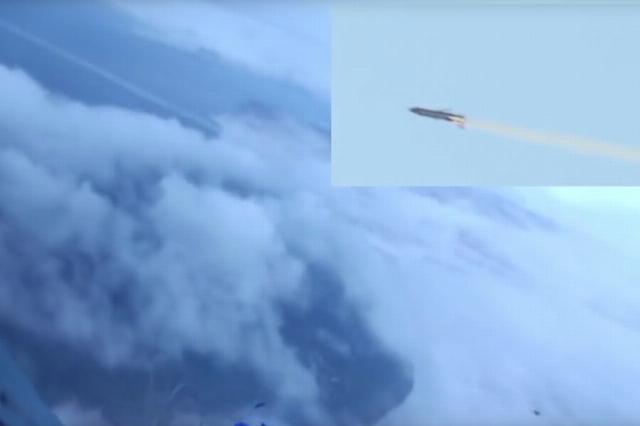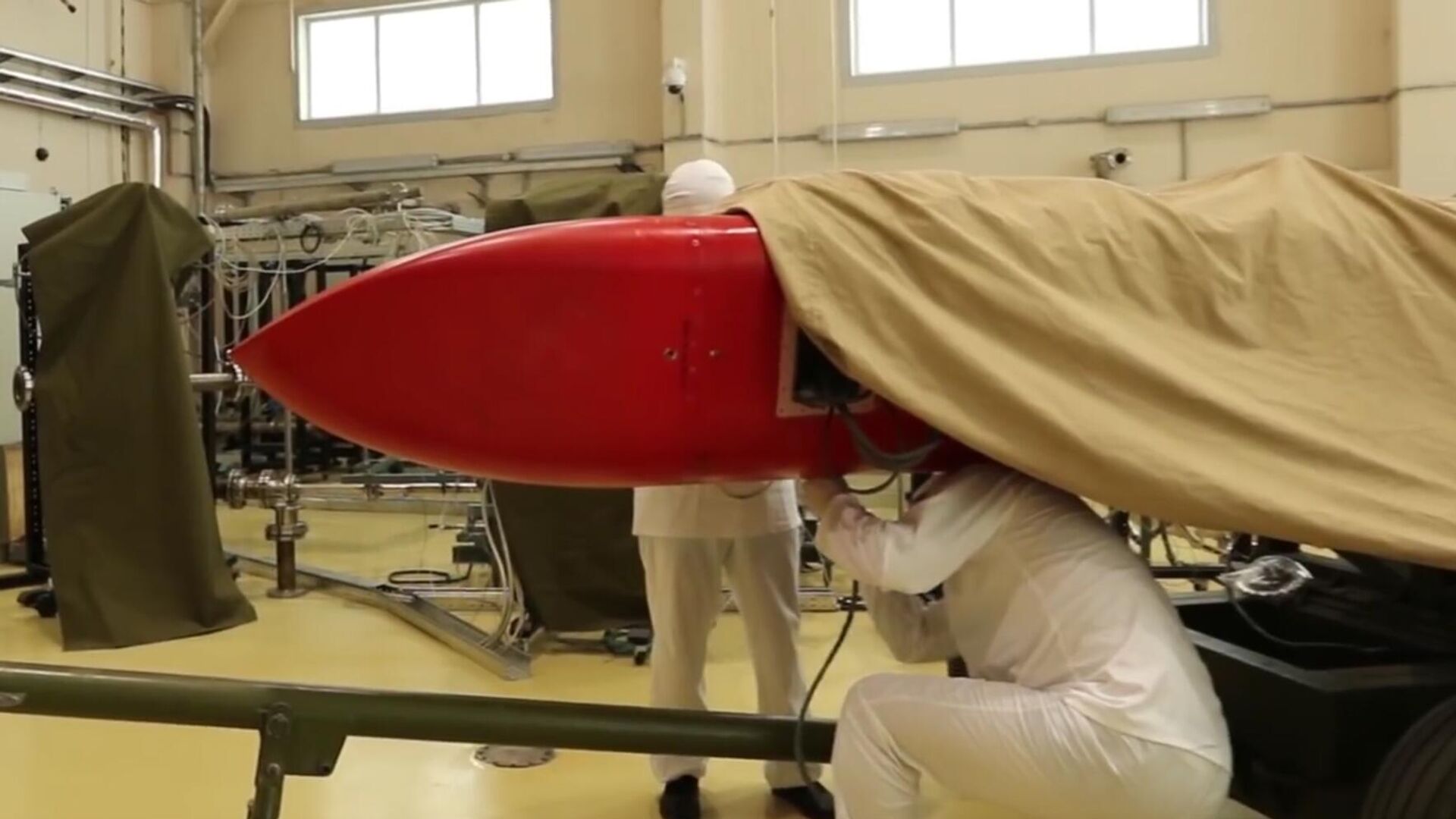Burevestnik nuclear-powered cruise missile: its features and characteristics
In late October, Russia announced the successful completion of tests of the Burevestnik, the world's first intercontinental cruise missile with a nuclear power plant that provides unlimited range. The development has caused alarm in a number of Western countries. In the United States, the rocket was dubbed the "little flying Chernobyl." What is this latest weapon, how is it unique, how was it created and what is its principle of operation - in the material of "Gazeta.Ru».
What is known about the Burevestnik: the history of development
The Burevestnik GRAU (Main Missile and Artillery Directorate of the Ministry of Defense of the Russian Federation) is 9M730, the NATO code name is SSC-X-9 Skyfall, a global-range intercontinental cruise missile with a nuclear power plant.
The development of the Burevestnik began in 2002 after the United States withdrew from the 1972 Anti-Ballistic Missile Treaty. This decision prompted Russia to look for new ways to maintain military-strategic parity.
In March 2018, during the announcement of the Russian President's message to the Federal Assembly, footage of the successful testing of new weapons was shown. "A low-flying, low-visibility cruise missile carrying a nuclear warhead with an almost unlimited range, an unpredictable flight path and the ability to bypass interception lines is invulnerable to all existing and prospective missile defense and air defense systems," the president noted at the time.
According to the results of voting on the website of the Ministry of Defense, the name "Burevestnik" was chosen for the new missile.
In the 1960s, the United States created a similar nuclear-powered rocket, the SLAM (Supersonic Low–Altitude Missile, a low-altitude supersonic guided missile), a project known as the Pluto. However, due to technological difficulties, environmental and political risks, the project was closed.
On October 21, 2025, a crucial test flight was successfully conducted. According to Valery Gerasimov, the head of the General Staff of the Russian Armed Forces, the rocket covered 14,000 km in about 15 hours, which, according to him, is not the limit. The successful completion of the tests of the Burevestnik rocket was announced.
 |
| Tests of the Burevestnik nuclear-powered cruise missile, a frame from the video of the Ministry of Defense |
| Source: © Ministry of Defense of the Russian Federation |
On National Unity Day, November 4, 2025, Vladimir Putin awarded the creators of the cruise missile in the Kremlin. "The result you have achieved is, without exaggeration, of historical importance for our people, for ensuring security and strategic parity for decades to come, and we can safely say for the entire 21st century," the president said, addressing the Burevestnik developers.
He also noted that the Burevestnik surpassed all known missile systems in the world in terms of flight range. He has a high accuracy of hitting the target. The President stressed that it takes seconds to launch ultra-small nuclear reactors, whereas the launch time of conventional reactors is measured in hours and even days.
According to the Military Review, the development is being conducted by the Novator Design Bureau (Yekaterinburg). The characteristics of the cruise missile remain classified. However, the Russian media wrote about the features of this type of weapon a few years ago, citing military experts and their own sources.
Technical characteristics of the Burevestnik
The main feature of the Burevestnik is the presence of a small-sized nuclear power plant, which allows the rocket to stay in flight for a long time. The air passing through a nuclear reactor heats up, forming a jet stream. At the same time, the engine does not leave a dirty trace in the atmosphere. In addition, the missile can attack targets from any direction.
Parameters of the missile system:
- The engine type is a nuclear power plant equipped with a nuclear warhead;
- Flight range of the Burevestnik: exceeds 20 thousand km;
- Flight speed: up to 1300 km/h, subsonic or transonic;
- Flight profile: low altitude, up to 100 m; taking into account the flight path and maneuvering, this allows the missile to overcome the boundaries of air defense and missile defense systems.
- Dimensions: length at launch - 12 m (with launch accelerator), in flight - 9 m.
 |
| Tests of the Burevestnik nuclear-powered cruise missile, a frame from the video of the Ministry of Defense. |
| Source: Russian Ministry of Defense/RIA Novosti |
According to military expert Viktor Litovkin, it makes no sense to compare the Burevestnik with its Western counterparts, because the Russian cruise missile has a number of undeniable advantages.
Victor Litovkin
Military expert
The expert noted that it is almost impossible to shoot down the Burevestnik. "The vaunted American Patriot air defense system has a dead zone from the ground to a height of 100 meters. Our Burevestnik is capable of operating at extremely low altitude, precisely in the range in which Patriot does not see targets," Viktor Litovkin emphasized.
Theoretically, the Burevestnik has an almost unlimited flight range. This distinguishes this development from most other cruise missiles, which have a limited range. The Petrel can travel tens of thousands of kilometers and change its route, approaching the desired target.
Why is the Petrel called a Doomsday weapon?
Information about the successful launches of the Burevestnik has been widely disseminated in the media and on the Internet. Many have called the new Russian missile a "Doomsday weapon" that can only be used in the event of a global nuclear war.
Indeed, the nuclear charge of a rocket has enormous destructive power. High accuracy, maneuverability, unlimited range, complex flight path and many other parameters make it practically invulnerable. The use of such weapons can lead to a global catastrophe.
There may also be risks to environmental safety. They are increasing many times, because the missile not only carries a nuclear warhead, but also contains nuclear fuel.
Therefore, the use of such deadly weapons is justified only in the context of a nuclear conflict that has begun.
At the same time, Russia has repeatedly stated that the development of systems such as the Burevestnik is a necessary measure in response to the destabilizing actions of NATO.
Advantages of the Burevestnik
The long range of the Burevestnik means that the launch of a cruise missile is possible without the use of aircraft or submarines. Underground or surface complexes are suitable for the placement and basing of these weapons.
For example, the range of American Tomahawks is limited to 2500 km. While the Burevestnik has an unlimited flight range thanks to its nuclear engine. In recent tests, the rocket flew 14,000 km, which is significantly higher than the American figure.
As for the Tomahawks, these weapons have been used many times and, unlike the Burevestnik, are already in service with the US Army. According to the manufacturer Raytheon, Tomahawk missiles have been used in combat more than 2,350 times, with more than half of the launches occurring during the operation in Iraq.
 |
| Tests of the Burevestnik nuclear-powered cruise missile. |
| Source: © RIA Novosti / Ministry of Defense of the Russian Federation |
Prospects for the adoption of the Burevestnik into service
The Russian president instructed to prepare the necessary infrastructure for the deployment of cruise missiles in the army.
"There is still a lot of work to be done to put these weapons on combat duty, this is understandable, we need to implement all the regulations," Putin said during a meeting with the commanders of the groups involved in the military.
How soon this happens depends on a number of factors, in particular, on further decisions of the country's leadership.
He assessed the prospects of taking the Burevestnik on combat duty in a conversation with Gazeta.Ru" Alexey Zhuravlev, First Deputy Chairman of the State Duma Committee on Defense.
Alexey Zhuravlev
First Deputy Chairman of the State Duma Committee on Defense
The deputy called the Burevestnik a weapon of a "fundamentally new class." "The rocket has a nuclear engine, which means it can fly for an almost unlimited amount of time, deceiving enemy air defense systems, creeping over the terrain. It is not for nothing that they say that it is impossible to shoot down such a missile, at least by the means currently available," Zhuravlev stressed.
The emergence of such powerful weapons has a serious impact on the strategic balance of power between the world powers, forcing states to reconsider their approaches to defense strategy. This poses new challenges for the international community and requires long-term agreements.
Vadim Verpeta

